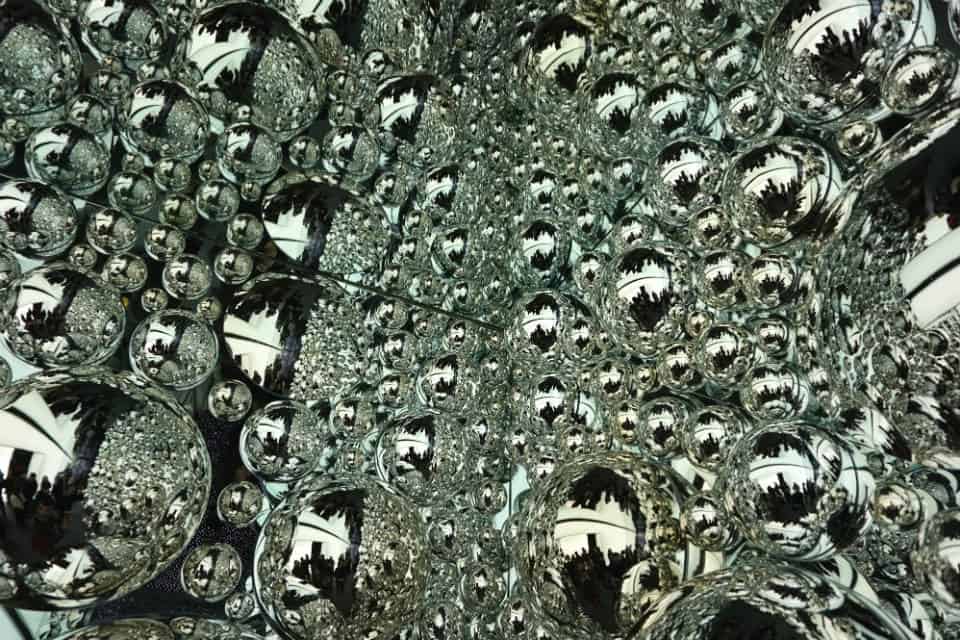
Hyundai's Hydrogen Dream
“We believe hydrogen energy is the key to a more sustainable world.”
“If you’re going to pick an energy storage mechanism, hydrogen is…incredibly dumb.”
The first of these quotes is from South Korean carmaker Hyundai Motor Company (HMC), which this month launched the Nexo, its brand new hydrogen car, or, to be precise, hydrogen fuel cell vehicle (FCV).
The second is from Tesla CEO Elon Musk, a renowned disser of hydrogen as a vehicle fuel.
Brave or stupid? A fine and subjective line separates the two, and it’s this line that currently divides green transport nerds on the question of hydrogen-fueled cars and their makers.
To H2 advocates, Toyota, HMC and Honda — the main carmakers pushing FCV models today — are brave and visionary. Hydrogen is the most abundant element in the universe, they point out. Cars running on it emit only water (by combining hydrogen with oxygen to create H2O). And, unlike battery electric vehicles (BEVs) such as Tesla cars, FCVs don’t require large batteries, which pose problems of disposal because of all the pollutants they contain.
Advocates claim that a coordinated push from the auto industry, government and fuel suppliers is all that’s needed to build viable networks of hydrogen filling stations and begin a new energy era.
But hydrogen’s detractors are quick to smack down such claims, drawing on a long list of facts and figures to explain why it will never make sense as a vehicle fuel.
“Hydrogen fuel cell cars are a dead end from a technological, practical and climate perspective,” wrote Joseph Romm, a former U.S. Department of Energy assistant secretary, citing reasons including the huge energy losses incurred in the process of producing hydrogen in the first place.
Indeed, though FCVs have been around since the late 1950s, sales worldwide have remained minimal, even in recent years as BEV sales took off. Recent reports cite total global sales of hydrogen FCVs since 2013 as “inching close to 6,500,” compared to 1,223,600 BEVs sold worldwide in 2017 alone.
In South Korea, the Ministry of Environment counted a total of 310 hydrogen vehicles in circulation as of March 2017. Media reports claimed that HMC had received 1,164 orders for its new Nexo FCV as of Apr. 4 this year, but the company did not confirm this at the time of publication.
Even the creation of hydrogen is a problem. Over at environmental news website Treehugger.com, green transport expert Lloyd Alter came down firmly in favor of BEVs, slamming FCVs because most hydrogen today is made through steam reformation of natural gas, a process that requires “more energy than you can recover from the resulting hydrogen that’s produced.”
(You can also produce hydrogen through electrolysis of water, which, if the electrolysis is powered by renewable energy, is a very eco-friendly process. But hardly anyone’s doing that yet, mainly because of high equipment costs and efficiency issues.)
If your eco-friendly vehicle technology is being trashed by Treehugger.com, you know you’re in trouble. Yet some of the world’s leading carmakers are persisting with it.
South Korea’s HMC has been developing fuel cell technology since the early 1990s, and released the Nexo, its first vehicle to be produced exclusively as an FCV, in March this year.
During the recent Winter Olympics in Pyeongchang, HMC’s Creative Design Team created a stunning pavilion to promote hydrogen FCVs. Grabbing attention with its state-of-the-art Vantablack exterior, the pavilion took visitors on a beautiful abstract journey representing the chemical changes of hydrogen as a fuel.
Read “Black is the New Black: Hyundai Hints at Hydrogen Future”
The pavilion was a poetic and bold gesture, avoiding any direct references to or images of cars.
But when it comes to specific comments, HMC is somewhat guarded. The company initially agreed to answer detailed questions from Korea Exposé, but later scaled its response back to a general comment on the need for infrastructure.
“We share the general view with the automotive industry and Hydrogen Council that sufficient infrastructure will be a critical part to help proliferation of the EVs, FCEVs and any other sort of eco-friendly vehicles,” said Jin Cha, a PR official from the conglomerate.
Even the company’s press release about the Nexo fails to emphasize its revolutionary fuel source as strongly as other features, such as self-driving technology and the car’s infotainment system. Sure, these are interesting in their own rights. But they’re largely unrelated to the hydrogen fuel cell and seem to detract attention from it.
HMC may be treading carefully due to political considerations — as the only maker of commercial FCVs in South Korea, it desperately needs the government’s help in building hydrogen infrastructure, but must also avoid being seen as a recipient of special favors.
But it’s also somewhat puzzling why the company is not going on a stronger hydrogen publicity blitz — if the number of hydrogen filling stations doesn’t rapidly increase from the current 12 or so, it’s hard to see the Nexo or any other hydrogen FCV succeeding in South Korea in the long term. If the Nexo and other FCVs fail to sell well, Hyundai’s quarter century of hydrogen vehicle research could end up bearing scant fruit.

H2 Dreams
When Barack Obama effectively killed the U.S. government’s hydrogen fuel cell program in 2009, his energy secretary and Nobel laureate Steven Chu declared fuel cell technology and hydrogen infrastructure too inadequate to allow a hydrogen car economy to develop in the next few decades.
But hydrogen was not dead for long. In 2017, a group of top global energy, transport and industry companies got together to form the Hydrogen Council, aiming to secure a key role for the gas in the transition to a new energy order. Why?
Some environmentalists were suspicious of the composition of the Hydrogen Council: Major automakers like Toyota, HMC and Honda rubbed shoulders with international oil and gas players like Shell, Total, Statoil and Linde. Lloyd Alter of Treehugger.com pointed out that it was in these companies’ interests to produce hydrogen from natural gas, dismissing the council as their attempt to stay relevant while the world ostensibly moved to “cleaner” fuels:
“This is why we have hydrogen powered cars — to provide another market for all that natural gas, and to keep centralized control of the fuel among the big fossil fuel companies,” he said.
For now, the fossil fuel argument appears somewhat valid in South Korea: Almost all hydrogen is produced at the country’s three petrochemical complexes, from natural gas.
“Those facilities are operating at about 60 percent capacity,” said Kwon Sung-wook of H2Korea, a public-private sector alliance formed to promote the shift to a hydrogen economy. “If they’re operated at closer to 100 percent capacity, that will produce enough extra hydrogen to power between 2 and 4 million FCVs.”
So far, so fossil fuel-based. Even if a few million cars in South Korea did eventually run on hydrogen, giving off only water as a by-product, the hydrogen they ran on would still come from natural gas, under the current scenario.
But now, the Moon Jae-in administration has a policy that could potentially — although not definitively — give hydrogen a key role, not just in transport but South Korea’s entire energy system.
Here’s how it works: In December 2017, the South Korean government announced a plan to generate 20 percent of the country’s electricity from renewable sources — mostly solar and wind — by 2030. Renewables now account for only about five percent of total generation, so this is set to bring massive change in the energy sector.
But while Moon’s plan paints a picture of future renewable generation sources, it’s relatively lacking in plans for energy storage.
Renewables have a big drawback: intermittency. When the sun shines and the wind blows, you have too much electricity. At night and when there’s no wind, you don’t have enough.
This means you need to store electricity generated at times of surplus to use later during deficits. One way of doing this is with giant batteries, like the one Tesla recently built in Australia, to much media acclaim.
But even giant batteries can’t store that much energy when it comes to powering whole cities and economies. And they’re expensive.
In Europe, countries get around this problem by having connected electricity grids: France and Germany, for example, can send each other electricity according to varying supply and demand. But South Korea does not have this option: With sea on three sides and North Korea on the other, it’s an electricity island.
This is where hydrogen could potentially play a crucial role: If produced by electrolysis at times when there is too much renewably generated electricity, it can store large amounts of energy in gas form until it’s needed again. Should South Korea decide to invest in enough electrolysis equipment, hydrogen storage facilities and other elements of infrastructure, there is potential for hydrogen to plan an indispensable energy storage role.
“The advantage of hydrogen is that it can store large amounts of energy to take into account seasonal, temporal and regional fluctuations [in electricity generation],” said Ahn Kook-young, president of the Korean Hydrogen & New Energy Society.
Once electrolysis becomes the main means of producing hydrogen, Ahn argued, “energy equality” among countries would emerge, since the only raw material required is seawater. Countries with large expanses of desert to could potentially use their land to install solar electricity plants, produce hydrogen through electrolysis of water, and export the hydrogen to other countries with higher demand and less space.
“Japan is considering using solar power to produce hydrogen in Australia, then importing it by ship,” pointed out Kim Beom-jun, a researcher at LG Economic Research Institute.
Just as the BEV market now has momentum of its own, prompting battery technology to evolve in leaps and bounds, it’s easy to imagine hydrogen storage and distribution technology enjoying a spurt of development once the hydrogen economy starts to take root.
***
But back in the world of cars, the chicken-and-egg problem that has always dogged hydrogen vehicles remains: No one wants to build hydrogen filling stations when there are no vehicles to use them, and no one wants to make vehicles when there are no filling stations to fill them.
“In order to get through the ‘valley of death’ [initial period without profit], the central and local governments and private firms have to work together and share the costs,” said Kwon of H2Korea. “We need that kind of model. That’s the most important task now.”
Editor’s Note: This article was updated on Apr. 11. Originally, we reported that the Nexo was HMC’s first mass production FCV. In fact, an FCV version of the company’s Tucson sports utility vehicle was released in 2013, and sold in small numbers. The Nexo is HMC’s first FCV-only mass production vehicle.
Cover image: The Electrolysis Room in Hyundai Motor’s Hydrogen Pavilion, Pyeongchang Olympics. (Raphael Rashid/Korea Exposé)

